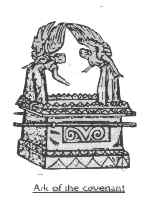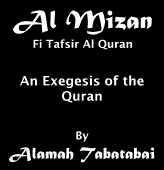
|
| Chapter 2. |
There is disagreement among Muslims as regards the construction of buildings over the graves of prophets and saints; and circumbulating them and considering them as places of worship.
Those who consider this haraam, present the following traditions in order to support their arguments:
(a) Ali (a.s.) said that the Messenger of Allah (s.a.w.s.) was present at a funeral when he asked:
"Which one of you would go towards Madinah and not find a single idol but break it, not a single grave but level it, and not a single picture but erase it.
A man asked, "I will, O! Messenger of Allah". So he departed for Madinah; but he became fearful of the people, there, and retraced his steps.
Ali (a.s.) said: "O Messenger of Allah, I will go."
The Holy Prophet said, "Go ahead."
So he went; then returned (after some time) and said, "O Messenger of Allah. I have not found a single idol but I broke it, not a grave but I levelled it and not a picture but I erased it."
This tradition has been quoted many a times in the books of traditions and we have presented the complete text of the same.1
(b) It has been narrated from the Prophet (s.a.) that he said: O Allah, do not make my grave an idol, curse of Allah be upon those who consider the graves of their prophets as places of worship.2
And in another tradition the Messenger of Allah (s.a.w.s.) had remarked about those who consider the graves of their prophets as places of worship, saying, "May Allah kill the Jews, they have taken the graves of their prophets as places of worship.3
(c) Conclusion derived from the traditions of the Prophet (s.a.) that prohibit women from the Ziarat of graves.
It is mentioned in Sunan Abi Dawood, Tirmizi and Ibne Majah from Abu Huraira, Hassan and Ibne Abbas that they reported the Messenger of Allah (s.a.w.s.) as saying: "Curse be upon the women who visit the graves."4
Purpose of the first Tradition.
Firstly: When the people of Madinah accepted Islam, the Prophet (s.a.) sent Musab bin Umayr as his emissary teach them the tenets of religion. This was due to the fact that though some of the people of Madinah had been present for Hajj and had taken the oath of fealty at the hands of the Messenger of Allah (s.a.w.s.), they were quite ignorant of the Islamic teachings. Hence it was necessary to teach them the rules of religion that had been promulgated till then.
The people had come for Hajj and some of them who were Muslims, reached Uqbah and took the oath of fealty at the hands of the Holy Prophet (s.a.w.s.). It was at a time when Islam had not spread to other areas. Subsequently, the Holy Prophet (s.a.w.s.) migrated to Madinah and Imam Ali (a.s.) followed him after three or more days. The circumstances of their arrival at Madinah are well documented.
The Holy Prophet (s.a.w.s.) gradually initiated the steps for the governance of Madinah after signing the treaties with Jews of Qurayza, Bani Nadir and Bani Qainqa.
Gradually, the people of Madinah entered the fold of Islam. So when did the Holy Prophet (s.a.w.a.) sent Imam Ali (a.s.) to attend a funeral in Madinah, and to break the idols, level the graves and erase the pictures like a ruler whom no one can disobey. Moreover, the first person who had gone, returned without achieving anything. Therefore, the Holy Prophet (s.a.w.a.) sent Ali (a.s.) and he (Ali) was present at the funeral most of the time so how could he have carried out the commands of the Holy Prophet (s.a.w.a.)?
Secondly: In another tradition Imam Ali (a.s.) told Abil Hayyaj Al Asadi: "I assign you a task which the Messenger of Allah (s.a.w.a.) assigned me: Level every grave and obliterate every idol."5
Imam Ali (a.s.) could not have sent Abil Hayyaj Al Asadi except during the tenure of his Caliphate.
Now, this raises many questions.
When did he order it ? Was it during his Caliphate when Islam had triumphed and the three Caliphs had passed away ? And towards which city did he send Abil Hayyaj to carry out the above instructions ?
And lastly, even if we consider the traditions to be correct, they must be with regard to the graves of the polytheists. How can we apply them to the graves of Muslims ?
Purpose of the second tradition
Firstly: Graves of the Prophets of Bani Israel.
It is mentioned in the Old Testament in the Book of Genesis 25 that:
Abraham breathed his last ... Issac and Ishmael his sons buried him in the cave of Mach-pelah, in the field of Ephron the son of Zohar the Hittite, east of Mamre ... There Abraham was buried with Sarah his wife.
And in Genesis 35:
And Jacob came to his father Issac at Mamre ... And Issac breathed his last; and he died and ... his sons Esan and Jacob buried him. And in Genesis 50, we come across the circumstances of the death of Yaqoob (a.s.) when he died in Egypt. His son Yusuf (a.s.) carried him to Mach-pelah and buried him near his grandfather and father. (Ibrahim and Ishaq).
The Old Testament, Book of Numbers : 20, mentions that Haroon (a.s.) died at Mount Hor and was buried there by his brother Musa (a.s.).
According to the Old Testament, Book of Deutronomy : 34
So Moses the servant of the Lord died there in the land of Moab, according to the word of the Lord, and he buried him in the valley in the land of Moab opposite Beth-peor: but no man knows the place of his burial to this day.
Old Testament, Joshua : 24
Joshua, the son of Nun .., died,.. they buried him in his own inheritance ... in the hill country of Ephraim ....
and
The bones of Joseph ... were buried at Shechem"
However, the Old Testament does not mention the places of burial of Dawood (a.s.) and Sulayman (a.s.). The author of Al-Qamus also admits: "We do not know the place of burial of Dawood (a.s.) and Sulayman (a.s.).
In Mojamul Buldan, under the word ‘Khalil’ is mentioned:
Al Khalil is the name of a place. It is a city which has buildings, forts and markets near Baitul Muqaddas. Between them is a distance of a day’s travel. At that place is the tomb of Khalil, Ibrahim (a.s.) in the depth of the earth. It is place of visitation for the people. Caretakers are appointed for the place and there is arrangement for visitors. This place is known as Khalil but it’s real name is Hebron or Hebri. It is mentioned in Taurat (Old Testament) that Khalil purchased a piece of land from Aafroon bin Sauhar Al Hassi for 400 dirhams of silver, and buried Sarah there. Some of the hadith scholars have been associated with this place, (i.e.they are referred to as Khalili). It is a lovely place which freshens and purifies the soul due to its blessings. It has a fort which was built by Sulaiman bin Dawood (a.s.). Al Harwi says, "I entered Baitul Muqaddas in 567 A.H. and in the city of al-Khalil gathered the scholars and elders, and held discussions with them. They told me that in the year 513 in the reign of Bardoel, this place had sunk in the valley of Khalil and a group of French people entered it.
They saw the tombs of Ibrahim, Ishaq and Yaqoob (a.s.). Their shrouds were decaying and they were sitting, reclining their backs to the wall. Above their heads, chandeliers (lantern) hung from the ceiling. Their heads were open. The King gave them new shrouds and again covered the place of their repose. Al Harwi continues: A man known as Armani decided to visit Khalil. He brought expensive gifts for the curator and requested him to allow him to see the last remains of Ibrahim (a.s.). The caretaker told him that it was impossible at that time. But it may be possible if he waited till the crowds depart. So when the crowds dispersed, the caretaker led him to a trap door and lifted it. Taking a lantern, both of them descended the steps (about 70 steps). It was a deep and vast cellar and a soft breeze blew in it. It had a platform where Ibrahim (a.s.) was lying. There was a green cloth over him. The gentle breeze moved the white beard of Ibrahim (a.s.). Besides him were Ishaq and Yaqoob (a.s.). After this, the caretaker brought Armani to the wall of the cave and said, "Sarah (a.s.) is behind this wall." The Armani expressed his desire to see behind the wall but a voice told him "Stop! Do not trespass into the prohibited place." So they turned back and came up outside.
The following incident is mentioned in the first part of Tarikh Ibne Asakir.
In 86 A.H., when Damascus was being excavated by the order of Walid Ibne Abdul Malik (died 96 A.H.), they found the head of Yahya ibne Zakaria in a basket in a casket below one of the pillars supporting the dome. It was beneath the greater dome.
There is no mention of all the graves of the Prophets of Bani Israel in Taurat and other books. The burial places of Lut (a.s.), Yusha, Yasa, Ayyub, Uzair and Zakaria (a.s.) are not known. As far as Isa Ibne Maryam is concerned, he was raised up by the Almighty Allah.
* * *
These are the details regarding the tombs of the Prophets of Bani Israel - the Jews. Yet we have never heard of the Jews ever considering the graves of their prophets as idols. Paying respect to a grave does not tantamount to worshipping it. They were facing the graves during prayers like we face the Kaaba during our prayers. So how can it be equated with idol-worship?
Secondly - Place of worship of the Jews.
The place of worship of the Bani Israel was also known as the Tent of worship.

The Bani Israel used to carry the ark with them wherever they migrated. This continued till they reached the land of Palestine. Dawood (a.s.) initiated the construction of a permanent place of worship based on the model of the worship tent. After him, Sulaiman (a.s.) completed it and transferred the tent and the Ark into it.6

* * *
Thus we conclude that the Jews were having a tent of worship since the time they were in the deserts of Sina, and when they reached Palestine, Sulaiman (a.s.) constructed a place of worship for them. It was called Haikal of Sulaiman. The tent of worship and the ark of covenant was transferred into it.
Whatever we have mentioned so far and whatever we will mention in future is authentic. There is no doubt in the traditions of the Prophet (s.a.) but as far as the reporters of traditions are concerned they are prone to mistakes and forgetfulness. Hence, we will investigate the matter in a critical way. Let us first examine the traditions mentioned by us in connection with the prohibition of the construction over the graves and then we can evaluate them.
After this, we shall present the traditions that support the construction of buildings over graves.
--------------1 Musnad Ahmed Vol.1, Pgs. 87, 89, 96, 110, 111, 127, 137, 139, 145, 150.
Musnad Taylasi, tradition no.96,155
2 Musnad Ahmed 2:246
3 Musnad Ahmed 2:285
4 Sunan Ibne Majah, Kitabul Janiaz, Chapter of Prohibition of women from visting graves.
Sunan Abi Dawood, Kitabul Janaiz.
Musnad Ahmed, Chapter 3, 2 : 336, 337.
Sunan Tirmizi, Bab al Janaiz 2:276.
5 Musnad Ahmed 1:89 and 96.
6 The Book of Exodus, 40:35-38.
The Book of Numbers 35-38.
 |
 |
 |
 |
| Multimedia |
 Dua Iftitah (mp3) Dua Iftitah (mp3) Abu Thar Al-Halawaji Abu Thar Al-Halawaji |
| listen download |
 Dua Kumail (video) Dua Kumail (video) Medina Medina |
| watch |
 Dua Tawasul (mp3) Dua Tawasul (mp3) Abu Thar Al-Halawaji Abu Thar Al-Halawaji |
| listen download |
 Ar Rahman (mp3) Ar Rahman (mp3) Abdul Basit Abdul Basit |
| listen download |
 Al Faatiha (mp3) Al Faatiha (mp3) Yasir Al-Filkawi Yasir Al-Filkawi |
| listen download |
 Al Anfaal 41-52 (mp3) Al Anfaal 41-52 (mp3) Yasir Al-Filkawi Yasir Al-Filkawi |
| listen download |
| Copyright © 2003 - 2006, www.IntroducingIslam.org [All Rights Reserved] 458761285 p u sh i sa |
